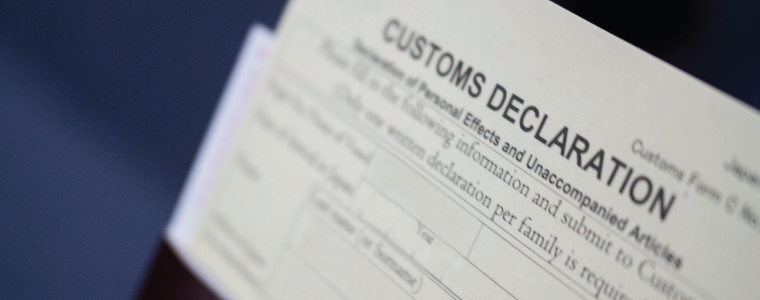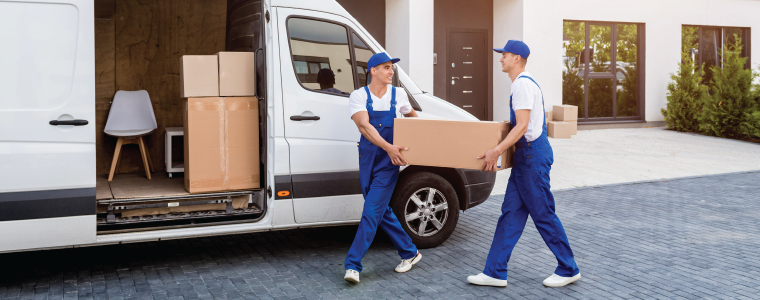International moves have it all: excitement, adventure, cultural touchpoints—and plenty of to-dos.
If you’re preparing for an overseas relocation, we’ve put together a list of must-knows to help you check off every one of those to-dos. (And prepare for a smooth relocation!)
We put our decades of international moving experience to work to show you what makes international relocations different than domestic moves, how to prepare your household items for the long journey, what you need to know to clear customs, how to choose an international moving company to assist, how to deal with culture shock and homesickness, and how to organize the days and weeks before your move.
With all these must-knows in hand, you’ll be perfectly positioned to make an easy transition to your new home.
Let’s start with what makes international moves a little bit different.
International Moves vs. Domestic Moves: What to Know

The obvious difference between an overseas move and a local move is the distance. Most international moves aren’t as easy as throwing your items in the back of a truck and driving them to the next town over.
During an international move, you’ll need to account for:
- Being without your belongings for weeks as they transition to your new home
- Ensuring your items are securely packed for the long journey via truck and (most likely) boat
- Securing duty-free entry for your belongings (if eligible) and clearing customs
- Making room for your household items at your new home (which might be more challenging than you think; we’ll explain below!)
- Adjusting to a new culture and way of life
That’s why an international move can feel like a lot to manage.
However, if you prepare for all of these eventualities, you’ll ensure a much smoother transition to your new home. Let’s tackle these topics in greater detail.
Moving Your Household Items During an International Relocation

There are few things more personal than our belongings. And nothing says “I’m home” like being surrounded by all of your favorite things in your new space.
So when you’re doing a long-distance move, it’s important to pay extra attention to your belongings. We’ll show you how to ensure that everything you want to take with you makes easy (and safe!) transition to your destination. We’ll also discuss why you might not want to pack absolutely everything you own.
Tip #1: Your Items Will Most Likely Move by Boat
Sending household belongings by ocean freight is the most economically viable option for most international moves.
In this scenario, your items will be packed into a container, which will be loaded on a ship bound for the sea port nearest to your final destination. If you don’t have enough items to fill a container, you can arrange for a less-than-container load (LCL) solution, in which your belongings are packed into wooden crates called lift vans, which are then loaded into a container with other shipments headed to the same destination.
Depending on your timeline—and your budget—air freight may also be an option. Your items will arrive faster than ocean freight, but that speed comes at a cost. Additionally, some items simply aren’t suited for air freight, including very heavy items.
For some moves, our customers use a combination of these two modes. They send a small shipment of items they need right away via air freight, followed by an ocean freight shipment with the rest of their items.
Ultimately, if your items do travel via ocean freight, they’ll go through quite a journey, so they need to be packed carefully and securely. There’s also another consideration for anything you send via ocean freight.
#2: Think Ahead to What You’ll Need
Ocean freight can take several weeks—or longer. As a result, you won’t be able to access anything you send via ocean freight for an extended period of time.
(Ask your moving company for an estimated timeline, which will depend on your exact origin and destination points.)
To ensure you have what you need during the transition period, take some time to think ahead and pack thoughtfully. Make sure you have everything you need to get you through until the rest of your items are delivered.
Tip: Make sure to keep your important papers with you when you move, including driver’s licenses, passports, birth certificates, and anything that’s irreplaceable.
#3: What Not to Pack (and What to Make Sure You Bring!)
Before every international move, we recommend downsizing. Take this opportunity to lighten your load and get rid of the items you no longer want or need. (You’ll also save money on your move!)
If you’re not making a permanent move, you may also wish to put some items in storage at your current location, rather than shipping everything.
Tip: If you’re moving abroad from the US, make sure to take into account the size of your new home. Especially in places like Paris, accommodations can be smaller than in the US. You might want to put more items in storage so your new home isn’t jam-packed full of furniture.
Whether you’re permanently downsizing or simply looking at storage options, two items we want to call to your attention:
Your Bed: Bring It
A good night’s sleep is essential, especially when you’re making a big transition to a new country. In our experience, beds differ significantly from country to country in size, firmness, and quality. If you have a bed you like, take it with you. It may be difficult to find one you love at your new destination. Trust us, you’ll sleep better.
#4: Take Care Before Packing Yourself
If you’re on a budget for your international move, you might be thinking of packing your own boxes. Before you go that route, consider the following:
Clearing Customs & Securing Duty-Free Entry for Your Household Items

At some point during your overseas move, your items will have to cross an international border. That means interacting with the customs agency in your destination country.
If you’ve hired a professional moving company to handle your relocation, they’ll assist with the paperwork and the customs clearance. That said, there are two areas you want to be aware of:
Customs Restrictions & Prohibited Items
You don’t want to start off on the wrong foot in a new country. Make sure you review any customs restrictions in your destination country, so you leave any prohibited items out of your shipment. (You’ll encounter some very specific regulations in certain countries!)
Duty-Free Entry
Depending on your destination country, securing duty-free entry for your personal household belongings can be a breeze—or involve a mountain of paperwork. (If you’re moving to London, those ToR1 forms can be tricky!)
Make sure you pay special attention to the requirements, since duty-free entry can save you a significant amount of money. Your moving company can assist, but it will be your responsibility to assemble the proper information to prove your eligibility and, in some cases, submit the necessary forms and paperwork to the government in your destination country.
Speaking of the pros, let’s talk about what to look for if you decide to call them in for your overseas relocation.
Hiring a Professional Moving Company for Your International Move

Working with an experienced moving company definitely comes with its upsides when you’re planning an overseas relocation.
An international relocation company with knowledgeable professionals on their team can help you with:
- Sending a seasoned crew to your home to pack your items securely for their long journey
- Making you aware of customs regulations that could cause issues
- Offering you full-value replacement coverage to protect your move
- Helping you prepare the paperwork you need to clear customs as smoothly as possible—and secure duty-free entry
- Connecting you with resources if there’s a snag during the customs process
- Sending another skilled crew to unpack all your items at your destination
- Answering any questions you have throughout the course of your move
In short, calling in the pros will take a ton of items off your to-do list. And, when you choose a company with an excellent track record, you’ll have an expert at your side to help make the overseas relocation process as easy as possible.
We recommend getting three, independent quotes for your international move before making a final decision.
As you consider these quotes, make sure you’re comparing apples to apples.
Here’s what we mean by that: Some companies may not include fees like terminal handling charges (THCs—extremely common for international moves) or the cost of quarantine inspections (a must for Australia moves). As a result, their quotes may seem cheaper.
When you request a quote, make sure you ask about any other potential charges beyond what’s in the quote. That way, you’ll be aware of the all-in cost for each provider.
Next, let’s talk about the realities you’ll face once the move is over.
Preparing for the Cultural Transition After Your Overseas Move

Your international move may take you to a place where the culture, the language, the rules and regulations, and the daily habits are different than what you’re used to.
This can be part of the excitement and adventure of an international move. It can also lead to culture shock or homesickness.
Be prepared for these feelings, and give yourself time to adjust. This is when having those familiar belongings around you can offer some reassurance. (Plus a comfy bed to ensure a good night’s sleep!)
You may also find solace in seeking out the things you loved in your previous destination. For example, if you cherish a cup of coffee done right, consider digging into Australia’s robust coffee culture. Language classes can also help if the native language is unfamiliar, as can seeking out expat communities.
The most important thing is to be patient with yourself. It can take time to adjust to new surroundings. Give yourself some grace, and you’ll find yourself adjusting before you know it.
Your International Move, Done Right

Now that you’ve seen just about everything involved with an international move—including the must-knows and the potential speed bumps—you’re perfectly positioned to get it done right.
Your To-Dos, Organized
To help you check off all the important to-dos when organizing your overseas relocation, don’t miss our DeWitt Move Moving Checklist. We’ll take you through all of your most important tasks from 6-8 weeks before your move all the way through completion.
If you’ve already got a to-do list going, it’s a great way to double-check that you’ve thought of absolutely everything.
And if you want some help with your move, our international moving experts are here for you! Our team has tens of thousands of moves under their belts, and they’d love the chance to execute a smooth, organized, and affordable international move for you.
Just reach out for a complimentary quote to get started.
Tell us about your move!
